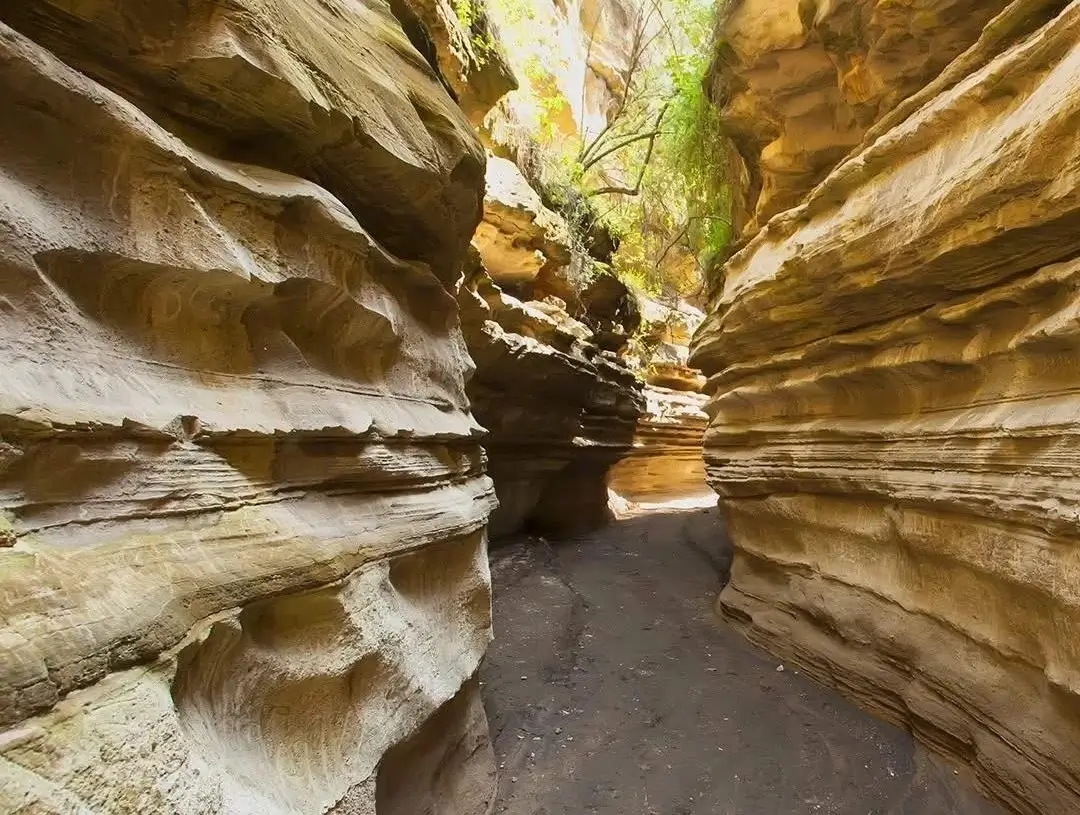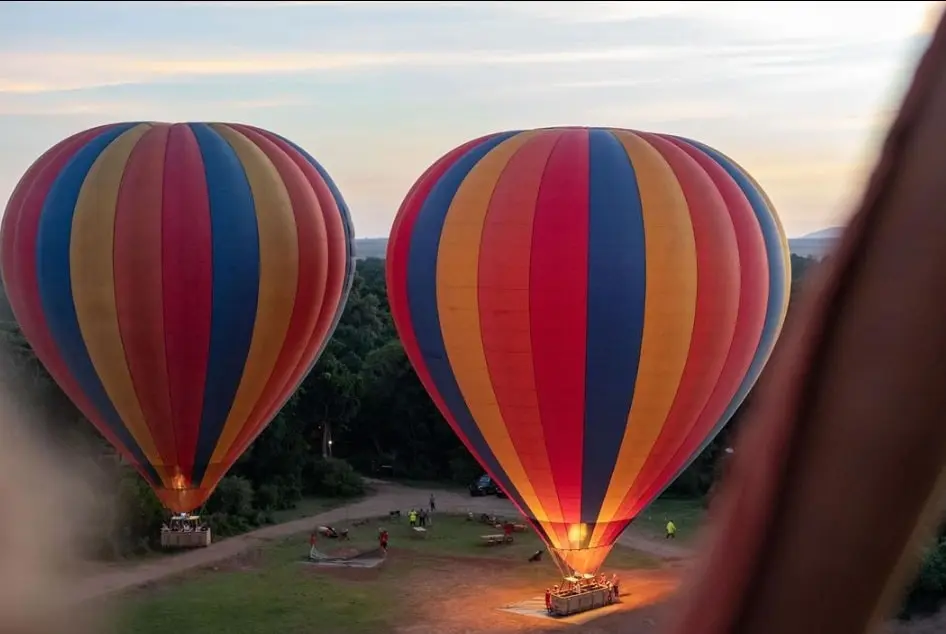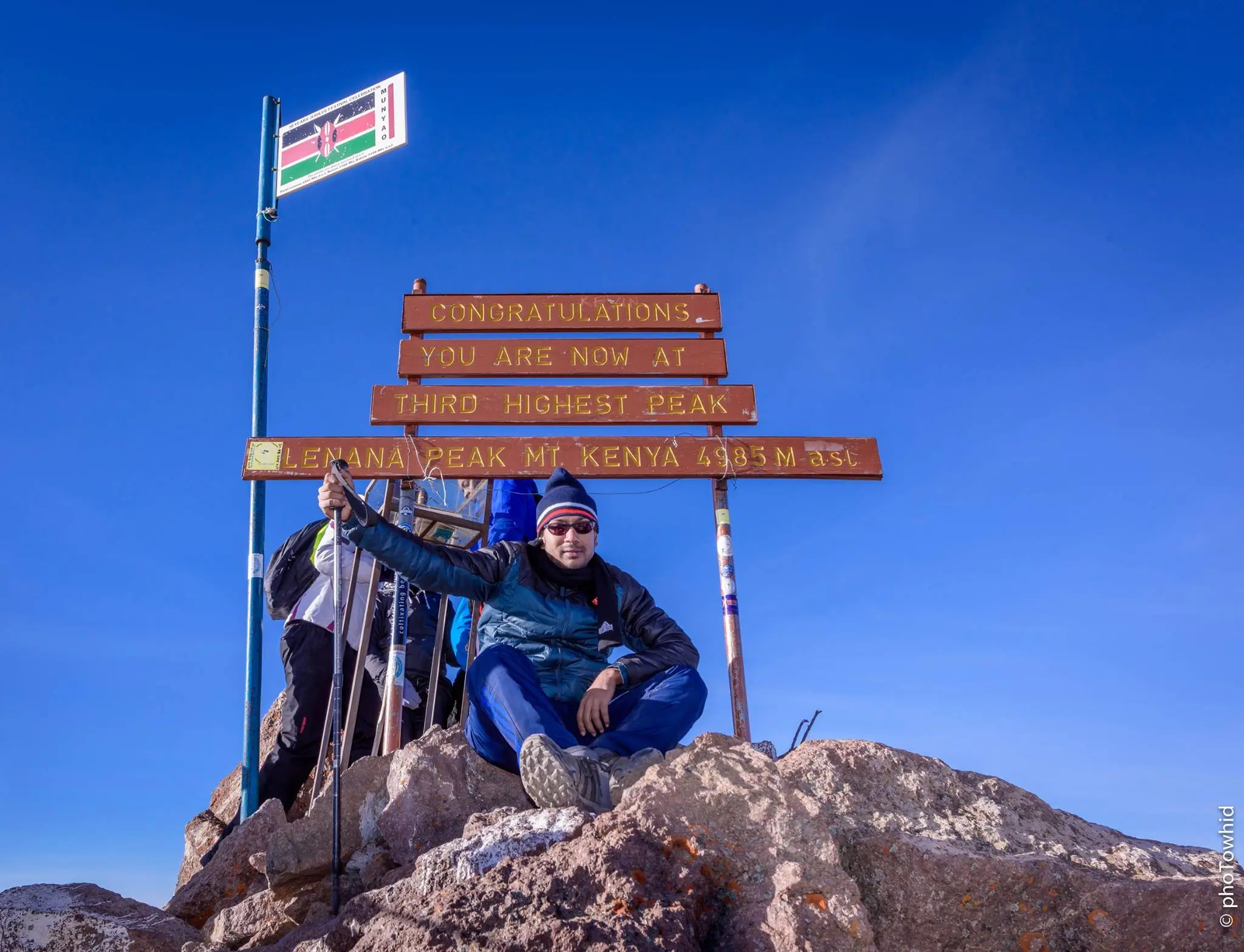Kenya is not only known for its vast landscapes and rich
wildlife but also a paradise for hiking enthusiasts. The country's diverse
topography offers a range of hiking trails, from lush forests and rugged hills
to towering mountains and expansive valleys.
Popular Hiking Trails in Kenya
|
Popular
Hiking Trail
|
Description
|
|
Oloolua
Nature Trail
|
Located in
the Oloolua Forest Reserve, this trail features a 5 km loop through
indigenous forest, alongside a waterfall, and past a bat cave. Ideal for
family outings and peaceful nature walks.
|
|
Naro Moru
Route of Mount Kenya
|
A popular
path to the summit of Mount Kenya, traversing rainforests, moorlands, and
alpine zones. Challenging, requiring proper acclimatization and physical
fitness.
|
|
Karura Forest
|
Near Nairobi,
offers a variety of trails perfect for short hikes or runs. Attractions
include waterfalls, bamboo groves, and an old Mau Mau cave. Provides a
tranquil escape from the city.
|
|
Hell's
Gate National Park
|
Known for
dramatic landscapes and geothermal activity, trails lead through gorges, past
cliffs, and to hot springs. Wildlife such as zebras, gazelles, and giraffes
can be spotted.
|
|
Mount
Longonot
|
A dormant
volcano in the Great Rift Valley. The hike to the crater rim is steep but
offers panoramic views. Walking around the crater's edge takes about two
hours.
|
|
Ngong Hills
|
Near Nairobi,
consisting of seven rolling hills offering a moderate challenge. Provides
stunning views of the Great Rift Valley and Nairobi cityscape. Popular for
picnics and weekend getaways.
|
|
Mount
Kilimambogo (Ol Donyo Sabuk)
|
Offers a
beautiful trail through montane forest to the summit. Relatively easy, with
great views of surrounding plains and the Kilimambogo river.
|
|
Mount
Satima (The Dragon’s Teeth)
|
In the
Aberdare Range, known for unique rock formations called the Dragon’s Teeth.
Trail takes you through bamboo forests and moorlands.
|
|
Elephant
Hill
|
In the
Aberdare Range, offers a challenging hike with steep ascents. Trail provides
diverse vegetation zones and breathtaking views from the top.
|
|
Rurimeria
Trail
|
One of the
most challenging hikes in the Aberdare Range. Requires physical fitness and
endurance, rewarding with stunning mountain and valley views.
|
|
Table
Mountain
|
In the
Aberdare Range, named for its flat summit. Offers beautiful scenery including
waterfalls and diverse flora. Less crowded, providing a peaceful hiking
experience.
|
|
Kijabe
Hills
|
Offers
moderate hikes with beautiful views of the Rift Valley and Aberdare Range.
Rich in birdlife, ideal for bird watchers.
|
|
William
Hill Trail
|
Near Limuru,
offers a moderate hike with stunning views of tea plantations and the Great
Rift Valley. Perfect for a day hike exploring the highlands around Nairobi.
|
|
Eburru
Forest Trail
|
Takes you
through Eburru Forest, known for geothermal activity and diverse wildlife.
Moderate hike with opportunities to see various bird species and natural hot
springs.
|
|
Menengai Crater
and Caves
|
One of the
largest calderas in the world, offering several hiking trails around its rim
and into the crater. Home to caves used by the Kikuyu people for traditional
ceremonies.
|
|
Ragia
Forest Trail
|
In the
Aberdare Range, known for waterfalls and dense forest. Relatively easy hike,
great for nature walks with bird-watching opportunities.
|
Best Time to Hike in Kenya
The timing of your hiking tour in Kenya can significantly
impact your experience. Here's a guide on the best times to plan your hikes:
Dry Seasons: June to October and December to March
The dry seasons are generally considered the best times for
hiking in Kenya. During these months, the weather is more predictable, and the
trails are less muddy, providing a more enjoyable hiking experience.
- June
to October: This period is characterized by cooler, drier weather. It
coincides with the Great Migration in the Maasai Mara, making it an
excellent time for combining hiking with wildlife viewing. Trails are
generally in good condition, and the visibility is high, which is perfect
for photography and enjoying the scenic views.
- December
to March: This is another dry period with warm temperatures. The
landscape is lush and green following the short rains in November,
providing a beautiful backdrop for your hikes. This period is also less
crowded than the mid-year season, offering a more peaceful experience.
Rainy Seasons: March to May and October to December
While the rainy seasons can present challenges, they also
have their unique advantages.
- March
to May: Known as the long rainy season, this period sees heavy
rainfall, which can make trails muddy and difficult to navigate. However,
the landscape is incredibly lush, and there are fewer tourists, which
means quieter trails. If you are well-prepared and enjoy solitude, this
can be a rewarding time to hike.
- October
to December: The short rainy season typically brings less intense
rains than the long rainy season. Trails can still be muddy, but the rains
are usually interspersed with sunny periods. This time is great for those
who don't mind a bit of rain and want to experience the vibrant flora and
fauna.
Kenya offers a variety of hiking experiences, from day hikes
to multi-day treks, catering to all fitness levels. Hiking tours in Kenya
combine scenic beauty, diverse landscapes, and the thrill of wildlife
sightings, making it a top destination for outdoor enthusiasts.
Whether you're seeking the challenge of climbing Mount Kenya
or the serene trails of the Ngong Hills, there's something for everyone.
Guided hikes are highly recommended to ensure safety and
gain valuable insights from experienced guides.
Top Hiking Destinations in Kenya
Kenya is home to some of the most stunning and diverse
hiking destinations in Africa. Here are the top spots that every hiker should
consider:
Mount Kenya
Mount Kenya, the second-highest mountain in Africa, is a
premier destination for climbers and trekkers. The mountain offers several
routes, each showcasing the area's scenic beauty and diverse landscapes.
Popular routes include:
- Sirimon
Route: Known for its gradual ascent and stunning views, this route is
ideal for acclimatization.
- Chogoria
Route: Famous for its dramatic scenery, including cliffs, tarns, and
the spectacular Gorges Valley.
- Naro
Moru Route: The most popular route, featuring a steep ascent and
breathtaking vistas.
Aberdare National Park
Aberdare National Park offers a unique hiking experience
with its lush indigenous forests, stunning waterfalls, and abundant wildlife.
Hiking trails here often lead to:
- Karuru
Falls: One of the highest waterfalls in Kenya, offering a mesmerizing
sight.
- The
Aberdare Ranges: Providing challenging hikes with rewarding views of
the surrounding landscape.
Hell's Gate National Park
Hell's Gate National Park is renowned for its dramatic
volcanic terrain, perfect for day hikes. Highlights include:
- Fischer’s
Tower: A great spot for rock climbing enthusiasts.
- Obsidian
Caves: An exciting hike through caves formed by volcanic activity.
- Hell's
Gate Gorge: Known for its narrow canyons and geothermal activity.
Ngong Hills
Located near Nairobi, the Ngong Hills are a popular choice
for day trips. Hikers can enjoy:
- Panoramic
Views: Stunning vistas of Nairobi and the Great Rift Valley.
- Cool
Climate: Refreshing breezes make for a comfortable hike even on warmer
days.
- Historical
Sites: Including the grave of Denys Finch Hatton, a character from
"Out of Africa."
These destinations offer a glimpse into the diverse hiking
experiences available in Kenya, catering to both novice and experienced hikers.
Types of Hiking Experiences in Kenya
Kenya's diverse landscapes and varied terrains provide a
range of hiking experiences to suit different preferences and fitness levels.
Here are the main types of hiking experiences available:
Day Hikes
Day hikes are perfect for those looking to explore Kenya's
natural beauty without the commitment of a multi-day trek. Some popular day
hike options include:
- Ngong
Hills: Enjoy panoramic views of Nairobi and the Great Rift Valley on
this accessible and scenic hike.
- Karura
Forest: Located in Nairobi, this urban forest offers serene trails
through lush vegetation, ideal for a quick escape from the city.
- Hell's
Gate National Park: Known for its dramatic landscape and geothermal
activity, this park offers several short trails that can be explored in a
day.
Multi-Day Treks
For those seeking a more immersive experience, multi-day
treks provide an opportunity to fully explore Kenya's diverse ecosystems.
Notable multi-day treks include:
- Mount
Kenya: This iconic trek typically takes 4-7 days, depending on the
chosen route. It offers climbers a challenging but rewarding journey
through diverse terrains, from bamboo forests to alpine moorlands.
- Aberdare
National Park: Multi-day hikes in this park allow trekkers to explore
its dense forests, stunning waterfalls, and diverse wildlife at a
leisurely pace.
- Chyulu
Hills: A less frequented but equally captivating trek, offering
rolling hills and panoramic views, ideal for those seeking solitude and
pristine nature.
Each type of hiking experience offers unique opportunities
to connect with Kenya's natural beauty and wildlife. Whether you prefer a
short, invigorating hike or an extended adventure, Kenya has something to offer
every hiker.
Combining Hiking with Wildlife Safaris
One of the unique aspects of hiking in Kenya is the ability
to combine trekking adventures with wildlife safaris. This combination provides
an unparalleled opportunity to experience the country’s rich flora and fauna up
close. Here are some ways you can enjoy both hiking and wildlife safaris:
Mount Kenya
While trekking up Mount Kenya, you might encounter various
wildlife, including elephants, buffalo, and several species of monkeys. The
lower slopes of the mountain are particularly rich in biodiversity, with
opportunities to spot a range of wildlife in their natural habitats.
Aberdare National Park
Hiking in Aberdare National Park often comes with the added
thrill of wildlife sightings. The park is home to elephants, leopards, buffalo,
and the endangered bongo antelope. As you traverse the forest trails and
mountain paths, keep your eyes peeled for these majestic creatures.
Hell's Gate National Park
Hell's Gate National Park offers a unique blend of hiking
and wildlife watching. The park is known for its variety of wildlife, including
zebras, giraffes, and antelopes. One of the best ways to explore the park is on
foot or by bicycle, allowing for close encounters with the animals in their
natural environment.
Maasai Mara and Ngong Hills
While the Ngong Hills are not traditionally known for big
game sightings, they do offer beautiful landscapes and the occasional glimpse
of wildlife. However, a visit to the nearby Maasai Mara can complement your
hiking adventure.
The Maasai Mara is famous for its abundant wildlife and the
Great Migration. After a day of hiking, you can take a safari tour to witness
lions, elephants, and wildebeest in the iconic savannah. However, you need to
plan the safari earlier because Masai Mara is about 4hours 30minutes drives
from Ngong Hills.
Guided Tours
To make the most of your combined hiking and safari
experience, consider booking guided tours. Expert guides can enhance your
journey by sharing their knowledge of the local wildlife and ecosystems. They
can also ensure your safety and help you spot animals that you might otherwise
miss.
Combining hiking with wildlife safaris in Kenya provides a
holistic adventure, blending physical activity with the excitement of wildlife
viewing. This unique experience is one of the many reasons Kenya is a top
destination for nature lovers and adventure seekers alike.
Guided Hikes: Safety and Knowledge
Guided hikes are highly recommended for anyone planning to
explore Kenya's diverse and sometimes challenging terrains. Here are several
benefits of opting for a guided hike:
Safety
- Experienced
Guides: Local guides are familiar with the terrain, weather conditions,
and potential hazards. Their expertise ensures that you stay on the safest
paths and avoid dangerous areas.
- Emergency
Preparedness: Guides are trained in first aid and emergency
procedures, providing peace of mind in case of accidents or health issues
during the hike.
- Wildlife
Encounters: In regions with wildlife, guides can help you navigate
encounters safely, ensuring both your safety and that of the animals.
Local Knowledge
- Cultural
Insights: Guides often provide fascinating insights into the local
culture, history, and traditions of the areas you are hiking through. This
adds a rich layer of understanding to your adventure.
- Flora
and Fauna: Guides can identify and explain the unique plants and
animals you encounter, enhancing your appreciation of Kenya's
biodiversity.
- Historical
Sites: In areas like the Ngong Hills, guides can share stories about
historical landmarks and their significance.
Enhanced Experience
- Navigation:
Guides handle the navigation, allowing you to focus on enjoying the hike
without worrying about getting lost.
- Customized
Routes: Based on your fitness level and interests, guides can
customize the hike to ensure you have the best possible experience.
- Permit
Arrangements: For areas requiring permits, such as Mount Kenya, guides
often handle the administrative details, making the planning process
smoother for you.
Supporting Local Economies
- Employment:
Hiring local guides supports the economy and provides employment
opportunities for the community.
- Community
Projects: Many guides are involved in local conservation and community
projects, so your fees often contribute to these efforts.
Choosing a guided hike not only enhances your safety and
knowledge but also supports local communities and conservation efforts. It's a
win-win situation that allows you to make the most of your hiking adventure in
Kenya.
Accommodation Options for Hikers
Kenya offers a wide range of accommodation options to suit
different preferences and budgets. Whether you're embarking on a multi-day trek
or a day hike, you'll find suitable lodging to enhance your hiking experience.
Campsites and Mountain Huts
For those who enjoy a more rustic and immersive experience,
campsites and mountain huts are ideal choices:
- Mount
Kenya: Several campsites and huts are available along the trekking
routes. Popular options include the Old Moses Camp, Shipton's Camp, and
Mackinder’s Camp. These provide basic amenities like sleeping quarters,
cooking facilities, and water sources.
- Aberdare
National Park: The park offers several campsites nestled within its
lush forests. Some of the well-known ones include Reedbuck Campsite and
Ruhuruini Campsite. These sites provide a close-to-nature experience,
allowing you to sleep under the stars.
- Hell's
Gate National Park: Campsites in this park provide an excellent base
for exploring its unique volcanic landscape. Fisherman's Camp and
Endachata Campsite are popular choices.
Lodges and Tented Camps
For hikers seeking more comfort and luxury, lodges and
tented camps offer a higher standard of accommodation with added amenities:
- Mount
Kenya: The Mount Kenya National Park has several lodges and tented
camps that offer comfortable accommodations with stunning views of the
mountain. Examples include Serena Mountain Lodge and Fairmont Mount Kenya
Safari Club.
- Aberdare
National Park: Aberdare Country Club and The Ark Lodge provide
luxurious lodging options with amenities like hot showers, gourmet dining,
and game viewing decks.
- Maasai
Mara: While not primarily a hiking destination, the Maasai Mara offers
excellent lodges and tented camps that can be part of a combined hiking
and safari experience. Options like Angama Mara and Mara Serena Safari
Lodge provide luxurious stays with breathtaking views.
Booking and Availability
- Advance
Booking: It is advisable to book your accommodation well in advance,
especially during peak hiking seasons (December to March and June to
September).
- Local
Agencies: Using local travel agencies can help in securing the best
options and rates for your stay.
Kenya's diverse range of accommodation options ensures that
every hiker can find a suitable place to rest and rejuvenate after a day of
trekking. Whether you prefer the simplicity of a campsite or the luxury of a
lodge, there's something for everyone.
Essential Packing List when Hiking in Kenya
Packing appropriately for your hiking adventure in Kenya is
crucial for comfort, safety, and enjoyment. Here’s a comprehensive list of
items to include:
Footwear
- Sturdy
Hiking Boots: Ensure they are well broken-in to prevent blisters.
Choose boots with good ankle support and traction.
- Lightweight
Shoes: For evenings at the campsite or lodge.
Clothing
- Layered
Clothing: Pack moisture-wicking base layers, insulating mid-layers,
and waterproof outer layers. This allows you to adjust to varying
temperatures and weather conditions.
- Hiking
Pants and Shorts: Durable and quick-drying options are ideal.
- Rain
Jacket: Essential for sudden rain showers, especially in mountainous
regions.
- Hat
and Gloves: To protect against the sun and cold, respectively.
Gear and Equipment
- Backpack:
A comfortable, well-fitting backpack with a hydration system. For
multi-day treks, choose one with a larger capacity.
- Sleeping
Bag: For multi-day treks, select one that is suitable for the expected
temperatures.
- Trekking
Poles: Useful for stability on uneven terrain.
- Headlamp:
For use in the early morning or evening, and for navigating campsites.
- Water
Bottle and Purification Tablets: Ensure you stay hydrated and have access
to safe drinking water.
Personal Items
- First
Aid Kit: Include bandages, antiseptic wipes, pain relievers, blister
treatment, and any personal medications.
- Sunscreen
and Lip Balm: High SPF to protect against strong sun at high
altitudes.
- Insect
Repellent: To protect against mosquitoes and other insects.
- Personal
Hygiene Items: Biodegradable soap, toothbrush, toothpaste, and wet
wipes.
- Towel:
Lightweight and quick-drying.
Documents and Essentials
- Permits
and Identification: Ensure you have the necessary permits for national
parks and identification documents.
- Cash
and Cards: Some remote areas may not have ATM access or accept cards.
- Guidebook
and Maps: Useful for navigation and information about the trails.
Optional Items
- Camera:
To capture the stunning landscapes and wildlife.
- Binoculars:
For wildlife spotting.
- Notebook
and Pen: For journaling your experiences.
- Portable
Charger: To keep your devices powered.
Packing these essentials will ensure you are well-prepared
for the diverse conditions you may encounter while hiking in Kenya. Proper
preparation enhances your comfort and safety, allowing you to fully enjoy the
beauty of the Kenyan wilderness.









